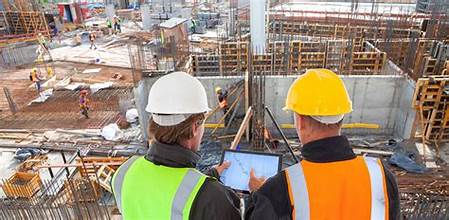Construction projects are complex. They involve multiple moving parts, from coordinating contractors and tracking materials to adhering to strict timelines and budgets. But amidst the hustle and bustle of construction work, one element often gets overlooked—documentation.
Proper documentation is not just a formality; it’s the foundation on which successful projects are built. For construction company owners, understanding the importance of thorough documentation can significantly impact efficiency, compliance, profitability, and the long-term reputation of your business.
In this blog, we’ll explore why proper documentation is essential in construction and provide actionable strategies to help you implement better documentation practices in your business.
What Is Construction Documentation?
At its core, construction documentation refers to the process of creating, managing, and securing all records related to a construction project. This includes contracts, design plans, permits, safety protocols, change orders, invoices, schedules, inspection reports, and more.
Documentation serves as the historical record of key decisions, actions, and agreements throughout the lifecycle of a project. It’s not just about filing papers; it’s about creating a transparent and organized process that ensures all parties can work seamlessly toward a common goal.
The Critical Role of Proper Documentation
1. Improved Project Management
When your project documentation is organized and up-to-date, managing operations becomes much smoother. With clear plans, schedules, and communication records, you can ensure that all stakeholders—from architects to subcontractors—are aligned on expectations and deliverables.
Without proper documentation, errors, delays, and miscommunications will likely creep into your project. For instance, a poorly documented change order could lead to work being completed incorrectly, wasting both time and resources.
By maintaining comprehensive and accessible documentation, you empower your team to stay on track, maintain timelines, and deliver on expectations.
2. Mitigating Legal Risks and Disputes
Construction projects are notorious for disputes. Whether it’s delayed timelines, cost overruns, or unmet expectations, conflicts can arise from various sources. Proper documentation can often stop disputes before they start—or at least ensure you’re prepared to address them effectively.
For example, an accurate record of a signed contract and detailed correspondence can provide critical evidence in resolving a disagreement without resorting to lawsuits.
Beyond disputes, documentation is key to demonstrating compliance with local regulations and safety standards. Failing to provide evidence of compliance could lead to penalties, project shutdowns, or worse, harm to workers or the public.
3. Financial Clarity
Construction projects involve substantial financial investments. Without diligent documentation, costs can quickly spiral out of control.
- Clear invoices ensure you’re not overpaying subcontractors or suppliers.
- Detailed change orders justify adjustments to project budgets.
- Accurate documentation of hours worked ensures precise labor costs.
This financial clarity doesn’t just help you today; it plays a critical role in protecting cash flow and profitability over the long term.
4. Ensuring Accountability
Proper documentation fosters accountability across the team. When everyone—from architects and engineers to subcontractors and laborers—knows that their tasks, timelines, and expectations are being recorded, it adds an additional layer of responsibility.
This prevents tasks from slipping through the cracks and encourages everyone involved to take ownership of their work.
5. Proactive Risk Management
Construction is inherently risky. Materials, labor shortages, and weather can throw even the best-laid plans off course. While you can’t eliminate these risks, documentation enables you to respond effectively.
For example, having an updated risk management plan in your records ensures you’re equipped to handle emergencies, like worker injuries or unexpected delays.
Additionally, detailed project documentation provides clarity for insurance claims in case of accidents, theft, or natural disasters.
Essential Documentation for Construction Projects
What types of documents do you need to manage a construction project effectively? While the specifics may vary depending on the project, here are the key categories of documentation that every construction company should prioritize:
1. Contracts
Detailed contracts outline the terms and conditions of the project and protect you from potential disputes. These should include every agreement made between clients, subcontractors, and suppliers.
2. Permits and Licenses
Ensure all required legal permits and licenses are in order before work begins. Non-compliance can lead to fines and project interruptions.
3. Design Documents
Blueprints, technical drawings, and design plans are your roadmaps for the entire project. Any deviations from these should be carefully recorded.
4. Daily Logs
Maintaining daily records of crew activity, completed tasks, and weather conditions provides an accurate view of project progress.
5. Change Orders
Construction projects evolve, and plans need to change. Properly documented change orders ensure that adjustments are authorized and accounted for in the budget and timeline.
6. Inspection Reports
Safety and quality control inspections are vital to the success and safety of a construction project. Keep these reports easily accessible to demonstrate compliance.
7. Invoices and Payment Records
Accurate financial documentation streamlines billing and payment processes while keeping fraud risks at bay.
Tools That Simplify Documentation
Gone are the days of relying solely on paper-based systems and bulky filing cabinets. Digital tools have revolutionized how construction companies manage documentation.
Here are some tools to consider implementing in your business operations:
- Construction Management Software – Platforms like Procore or Buildertrend offer document storage, team communication, and project tracking features under one roof.
- Cloud Storage – Services like Google Drive or Dropbox ensure your documents are securely stored and easily accessible.
- Mobile Apps – On-the-go workers can use apps to log project updates, upload images, and track progress directly from the construction site.
- Accounting Software – Tools like QuickBooks or FreshBooks ensure invoices, payroll, and expenses are properly documented.
By investing in these tools, you can keep your documentation secure and organized while improving efficiency across the board.
Best Practices for Maintaining Proper Documentation
- Create a Clear System
Establish standard processes for creating, storing, and sharing project documentation. Train your team to follow this system consistently.
- Update Regularly
Outdated records don’t help anyone. Make sure your team updates documentation in real-time or at least at the end of each day.
- Label and Organize Documents
Use clear, consistent naming conventions for digital files and folders. This minimizes confusion and makes retrieving documents more efficient.
- Backup Your Files
No matter how well-organized your digital system is, always have a backup. Use secure cloud storage to prevent data loss due to technical failures or security breaches.
- Audit and Review
Conduct regular reviews of documentation practices to identify gaps and ensure compliance with industry standards.
Stronger Foundations Begin with Better Documentation
For construction company owners, documentation is not just a task—it’s an asset that protects your business, your team, and your bottom line. By making it a priority, you position your projects for success, avoid legal and financial pitfalls, and enhance your company’s reputation in a competitive industry.
Start building a smart documentation strategy today and see the difference it makes for your construction business. Want more insights? Explore our free resources or contact us for personalized recommendations to streamline your operations.…

